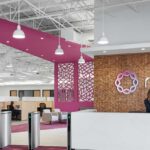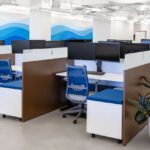
Because students are increasingly mobile, creating compelling places for working, studying and engaging with peers and faculty plays a key role in student success. The bottom line is: Learning can occur anytime and anywhere – so education interior design needs to fit that model.
Adaptable, Social, and Stimulating
On challenge that is clearly evident is that informal learning spaces must be multi-purpose and support multiple group interactions. They serve as the social hub of activity for students and faculty throughout campuses. These spaces require a stimulating environment as they are not governed by time or specific functions. Attracting students and faculty means the space must appeal to them.
Healthful & Resourceful
Students will go to those informal learning spaces that provide comfortable, ergonomic furniture, and appropriate light levels. The best informal learning spaces support a variety of teaching and learning styles. Ideally, they are multiuse and flexible. Because they are often in use 24/7, these undesignated and unscheduled spaces must be particularly resourceful.

Education interior design addresses the importance of creating an appropriate atmosphere for learning
These elements require a level of education interior design that you can’t find by simply purchasing furniture from a office furniture depot. You will need a team of experts that have been in the business of designing “intelligent interiors” for many years. That’s where we come in.



Leave a Reply